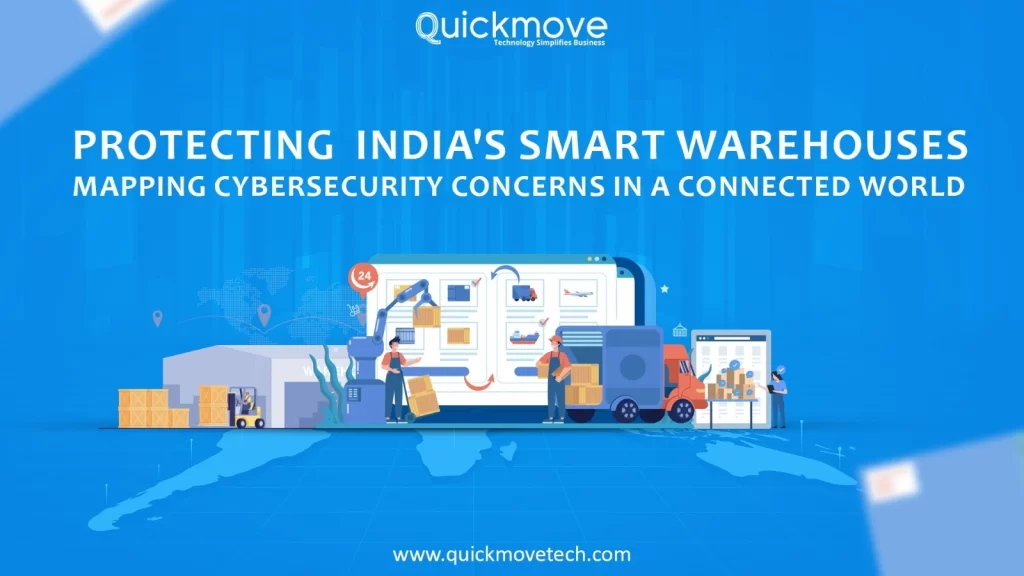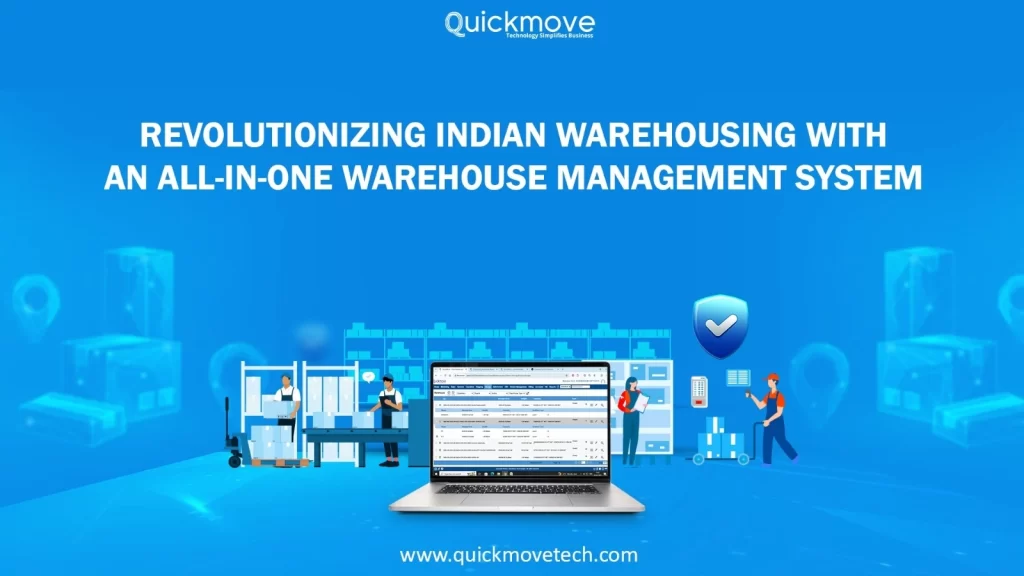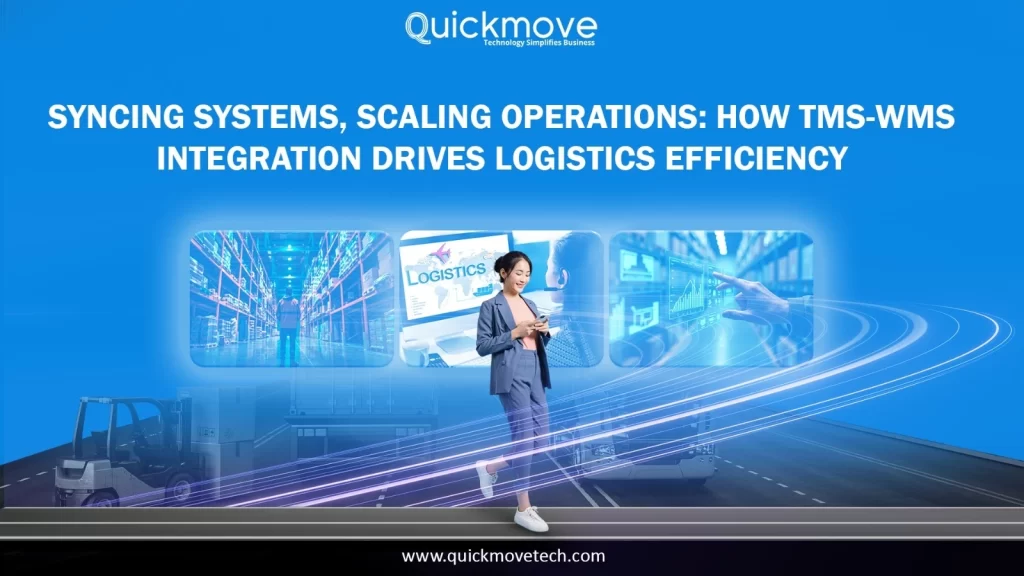India’s warehouses, where goods are stored, are getting much bigger and busier. This is happening because many more people are buying things online. Also, businesses always want faster and better ways to get their products to customers.
The most important tool helping with all this is called a Warehouse Management System (WMS). Think of it like a smart computer program. It helps the warehouse know exactly where everything is, from the moment things arrive to when they are sent out.
A good WMS makes warehouses work much faster and more smoothly. But it also creates a big challenge: How do we keep all the information on our computers safe from people who try to cause trouble online (like hackers)? We need to make sure all that important data is kept very, very safe. Think of your warehouse, not just as a physical facility, but as a vibrant, networked digital environment. The WMS is its brain, processing critical information, controlling inventory movement, monitoring shipments, synchronizing automated machinery such as robots, and creating key connections with your partners. If this vital system falls, the entire complex operation could be brought to a standstill, with disaster financial losses and a loss of trust that cannot be repaired.
Why Cybersecurity and Data Protection Are Non-Negotiable for Indian Warehouses
Each byte of data flowing through your WMS—whether it is sensitive customer addresses, confidential payment information, accurate inventory levels, or critical delivery schedules—represents a goldmine of information. A successful cyberattack could reveal this proprietary information, severely impact your operational continuity, or even induce crippling financial extortion. In India too, the playing field has now been greatly levelled by the recent passage of the Digital Personal Data Protection (DPDP) Act, 2023. Companies are now legally bound to safeguard personal data under strict legal compulsion, with considerable fines for every episode of default.
Navigating the Digital Minefield: Key Cybersecurity Challenges in India’s Warehouse Sector
While the change for the better brought about by a new-generation warehouse management system is unarguable, the odyssey through the cybersecurity environment offers an Indian warehouse a distinct set of daunting challenges:
- The Vulnerability of Legacy Systems: A significant chunk of India’s warehousing infrastructure is still based on older, less secure IT systems. The integration of newer, more advanced WMS solutions with such aging infrastructures has the tendency to inadvertently introduce colossal security vulnerabilities. It’s similar to installing an advanced security system in a building with old, easy entry points—the weakest point is the failure point.
- Securing the IoT and Operational Technology (OT) Frontier: Today’s warehouses are becoming ever more intelligent, with an extensive network of IoT sensors, Autonomous Mobile Robots (AMRs), and other robotics. While these technologies fuel efficiency, every connected device is a potential point of entry for hackers. Protection of this enormous “internet of things” (OT security) is an extremely specialized domain that is immensely different from the legacy IT security, a fact that most organizations are still discovering.
- Processing Huge Volumes of Sensitive Data: By nature, warehouses are data centers that process massive amounts of data. This includes not just vital inventory information but also extremely personal information of customers, employees, and suppliers. The magnitude and the sensitive nature of the data make it a most tempting target for advanced cybercriminals.
- The Ongoing Insider Threat: At times, the most subtle threat comes from within. Staff, contractors, or even ex-employees, through malicious or mere mistake (e.g., poor password practices, falling for phishing), can accidentally or deliberately produce data breaches.
- The Scourge of Phishing and Ransomware: These strategies are still inappropriately common. A sophisticated phishing email can prompt an unsuspecting employee to reveal precious login credentials, while a ransomware attack can encrypt a complete warehouse management system with demands for astronomical amounts to release it. These breaches can freeze operations, leading to extended downtime and substantial financial losses.
- Closing the Awareness and Training Gap: An inbuilt issue is that there is not enough cybersecurity awareness among warehouse staff. Even the most advanced technology WMS is at risk if workers lack the knowledge necessary to identify a phishing attack, have good password hygiene, or practice safe handling of data.
- The Challenge of Budget Constraints: For the majority of small and medium enterprises (SMEs) in India’s warehousing sector, funding comprehensive cybersecurity can appear as a daunting cost. This has a tendency to result in them having an under-capacitated security position, leaving them disproportionately vulnerable.
- Managing Evolving Regulatory Compliance: India’s data protection law, i.e., the DPDP Act, is relatively recent and continuous. Businesses need to contend with the complex and laborious process of routinely updating their WMS abilities and data handling processes to stay abreast of current legal compliance.
- Mitigating Third-Party Supply Chain Risks: Warehouses are likely to fall within a vast network of third-party logistics (3PL) providers, vendors, and IT service partners. Security vulnerability in any point in this extended supply chain can spread into your own operations and data, underscoring the imperative necessity for proactive third-party risk management.
Forging a Secure Future: A Proactive Approach
Successfully overcoming these challenges requires a multi-pronged, proactive approach. Having a strong warehouse management system with security inherently integrated from the beginning is key. This encompasses incorporating capabilities such as strict access controls, strong data encryption, automatically delivered security updates, and in-depth audit trails. In addition to technology security controls, ongoing employee training, clearly documented security processes, ongoing threat assessments, and an extremely tailor-made incident response plan are absolutely unavoidable.
With India’s warehouse sector experiencing its accelerated digitalization, adopting an unrelenting cybersecurity and data privacy strategy is no longer an option—it is a core imperative in building and sustaining trust, facilitating unwavering business continuity, and aggressively demonstrating a competitive future.




